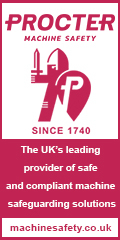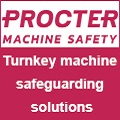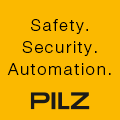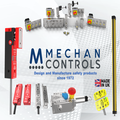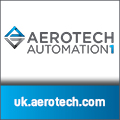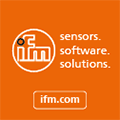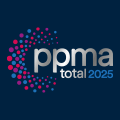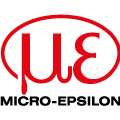
Posted to News on 14th Jul 2008, 17:09
Rofin's lasers help Cherry lead the keyboard market
For a number of years Rofin has worked with Cherry to develop laser-marked keyboards that lead the market yet remain cost-competitive.

Since the company's incorporation by Walter L Cherry in 1953, Cherry Electrical Corporation has grown to become a household name around the world for its range of innovative electrical products. The company's European production began in 1964 in Auerbach, a small town located between Nuremberg and Bayreuth in Bavaria, where the first production lines manufactured a range of microswitches. Today Cherry is believed to be the largest employer in this region, with over 1400 employees involved in the development and production of microswitches, keyboards, components for the automobile industry, and controls for household appliances. In addition, subsidiaries in Wolfsbach and a factory near Klasterec in the Czech Republic employ a further 700 personnel.
The success of the company can also be measured by a number of accolades awarded to the organisation in Auerbach. These include: Bayerischer Qualitatspreis 2008 (Bavarian Quality Award), Automotive Lean Production Award 2006, and Best European Factory 2005. A key to this success lies in the company's philosophy of embracing new technology wherever possible. This can be demonstrated in the development of new manufacturing methods - for example, the early use of laser technology.
Cherry started manufacturing computer keyboards in the 1980s and quickly became a market leader. The individual keys however, originally injection-moulded in two colours, proved to be too expensive for the emerging mass PC market.
Versatile and cost-effective
In an effort to reduce manufacturing costs, the sublimation labelling method was introduced. This process, however, brought its own problems due to the ever-increasing number of country and function variants, as special sublimation paper had to be kept for the labelling of each individual character. These problems prompted a search for alternative production methods that would provide a more flexible and cost-effective way of labelling the keys. It was during this review of alternative technologies that the Rofin and Cherry relationship blossomed.
Using the correct parameters, Nd:YAG solid-state lasers generate a high-contrast mark through a colour change in the material on a number of plastics. In contrast to printing, laser marking is indelible and anti-abrasive, even in cases of intensive use. With this process, the flexible deflection of the laser beam by galvo scanner heads provides every conceivable option of form and marking content. However, the target cycle time, together with the size of the marking area, created a problem for Cherry. The processing area of a scanner head only covered half the width of the keyboard, and mechanical repositioning of the keyboard or laser head was not possible due to the short 20s time available for each marking cycle.
Laser specialist Rofin-Sinar considered the application requirements closely before suggesting a system based upon a laser, a beam splitter, and two deflection heads. The beam splitter would guide the laser beam through the scanner heads sequentially. Each head would then mark half the keyboard in turn, within ten seconds. Rofin, with extensive experience in developing laser technology for laser marking applications, was confident that it would be able to configure this sophisticated system to provide reliable and consistent operation. With the Cherry plant running a three-shift operation seven days a week, there was no scope for downtime due to teething problems with a new technology.
The prototype system fulfilled all expectations. Cherry then further optimised the composition of the plastics used in the manufacturing process to obtain the best possible marking results. Cherry therefore became one of the first suppliers to the world market able to offer the new, flexible, high-quality marking method for keyboards. Subsequently, laser marking has become established as the standard method for the production of keyboards.
Three lasers per keyboard
Today at Cherry up to three lasers mark a keyboard at once - two at the top and one at the bottom. In this way, the complicated adhesion of a label to the bottom of the keyboard is no longer necessary. If desired, monochrome manufacturer logos or text can also be generated at the same time. If necessary, the complete marking procedure can be completed in less than 5s.
On some of its five assembly lines, the company is producing value-added keyboards incorporating integrated barcode or chip card readers and fingerprint or RFID sensors. About 20 Rofin-Sinar second-generation diode-pumped lasers are currently in use in Auerbach. These lasers also permit bright white marking of black keyboards. Heinz Freiberger, Head of Keyboards at Cherry, emphasises that there is almost no downtime. The lasers run reliably and trouble-free around the clock as a vital part in the production of the 10,000 keyboards that leave the factory each day.
Mechatronics for the automotive industry
The Automotive division at Cherry in Auerbach is now the main revenue-generating division of the company, accounting for 60 per cent of all income. Over the years, Cherry has systematically developed into one of the leading Tier 2 suppliers for complex modules used for switching and control. The product range extends from locking systems, switches and controls for the inside of vehicles, shift gates and immobilisers, to electrical ignition locks or components for adaptive chassis control.
Once again, Cherry's commitment to innovation has proven to be key in its success within the automotive market. Cherry's corporate culture motivates employees with its ideas for new and better production methods. The automotive industry makes great use of lasers for marking and traceability. Bar codes, ID and serial numbers are used for tracking the progress of each component through the various process steps during manufacture, with traceability for each component an essential part of the process.
In this case, the Rofin lasers generate unique and individual markings that can withstand the harsh conditions found in automotive applications such as heat, moisture, or contact with oils or other fluids.
Cherry is constantly striving for innovation, which has resulted in its production lines being continuously updated or redesigned. As a result of this process, the entire spectrum of automated manufacturing technology is in evidence on the production lines, industrial robots, feeding systems, solder baths, cable assembly, and so on. If new marking systems must be developed, which take internal knowhow to the limits, Rofin's laser specialists and its application laboratory are ready to evaluate new methods at short notice. Ongoing and intensive co-operation with the laser manufacturer is one of the factors that lets Cherry meet its future challenges with confidence.
Want the latest machine building news straight to your inbox? Become a MachineBuilding member for free today >>



